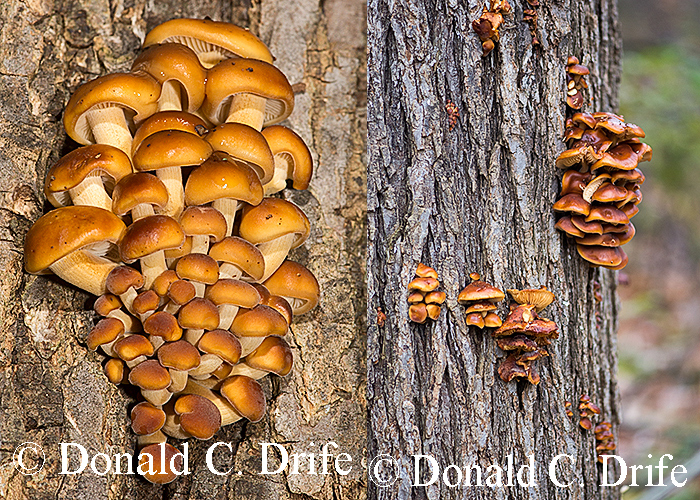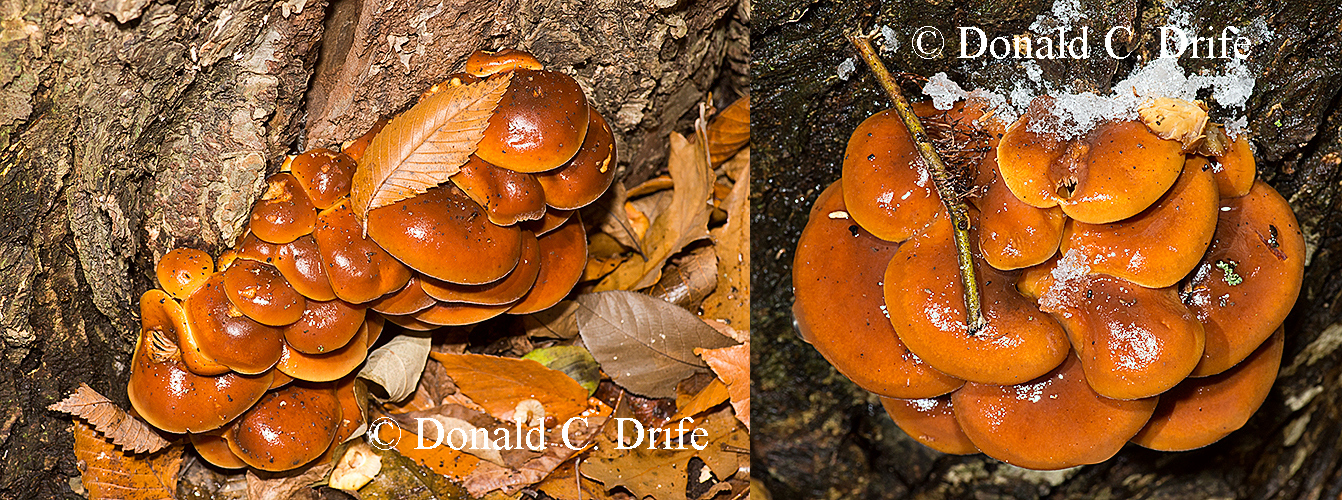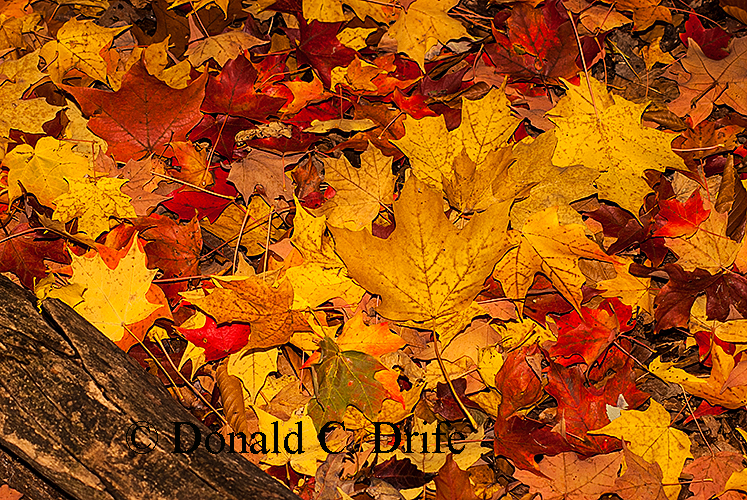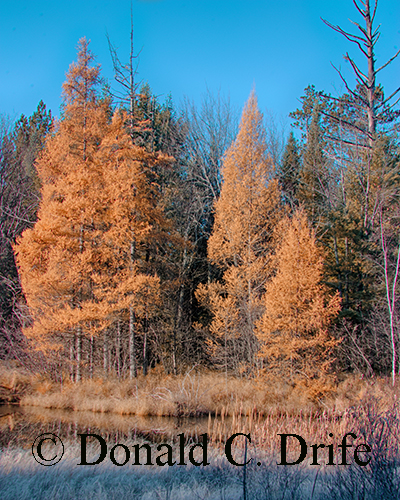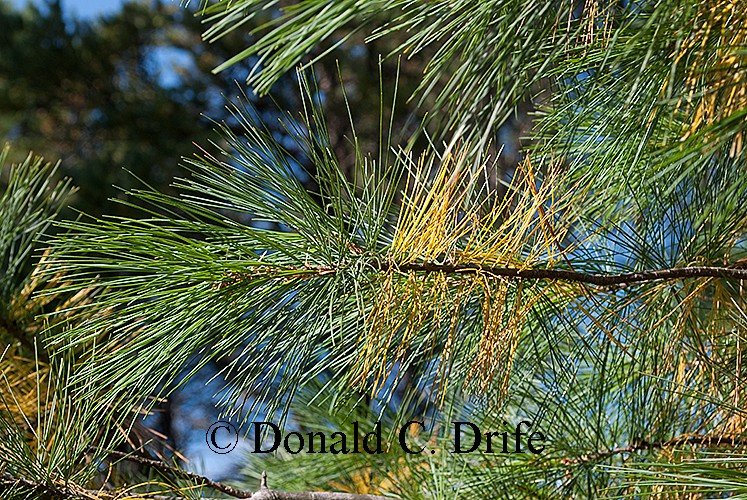Winter Mushroom (Flammulina velutipes) is aptly named. I was shown a nice colony of them by my friends John, and Mushroom Mary. When I photographed them it was below freezing. They were growing out of the trunk of a dead, standing, Ash (Fraxicus sp.). The tops of the orange-brown caps were sticky and the stems were velvety. The gills were barely attached and on some specimens appeared to be free. There were no rings on the stems. The spore print was white.
The scientific name Flammulina comes from flammeus which means small flame and refers to the orange-brown caps. Velutipes combines velutinus which means covered with fine hairs (think velvet) and pes meaning “foot” both refer to velvety stems. This species is also called velvet foot.
Deadly Galerina (Galerina autumnalis) is a similar mushroom but it has a brown spore print and most specimens have an annulus (stem ring). According to Tom Volk’s website the two species often occur together. According to Volk: “You must check every mushroom you pick for brown spore color and annulus. If either characteristic is present do not eat it.” If you are eating anything from the wild do not relay on the Internet for your identifications. Find someone who is an expert and also eats from the wild. Get a good guidebook and learn to use it. Learn the edible species and also the poisonous ones. I’m terrified at the number of people who forage from the wild without any real knowledge. Galerina poisoning is painful and can be deadly. If you are not absolutely certain what a plant is don’t eat it.
References
Kuo, M. (2013, February). Flammulina velutipes. Retrieved from the MushroomExpert.Com Web site: http://www.mushroomexpert.com/flammulina_velutipes.html
Volk, T. (1997, March). Tom Volk’s Fungus of the Month for March 1997. Retrieved from the Virtual Foliage Homepage: http://botit.botany.wisc.edu/toms_fungi/march97.html (Flammulina velutipes)
Volk, T. (2003, May). Tom Volk’s Fungus of the Month for May 2003. Retrieved from the Virtual Foliage Homepage: https://botit.botany.wisc.edu/toms_fungi/may2003.html (Galerina autumnalis)
Copyright 2018 by Donald Drife
Webpage Michigan Nature Guy
Follow MichiganNatureGuy on Facebook

